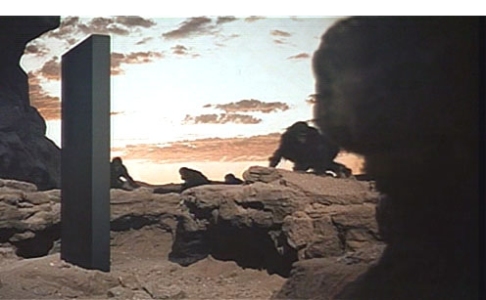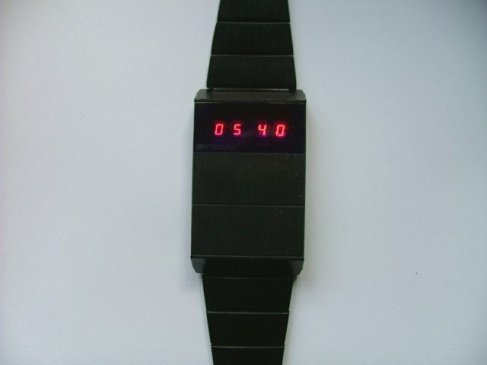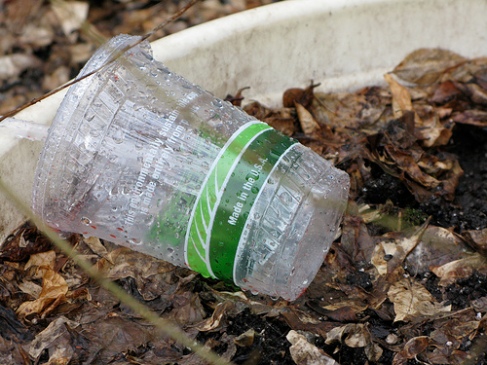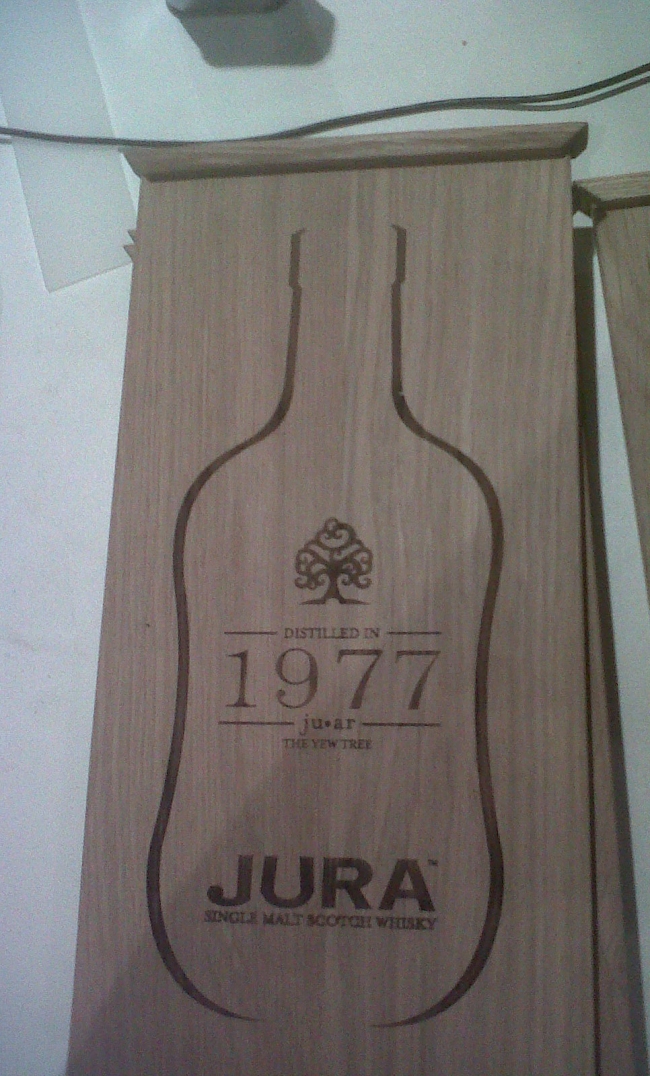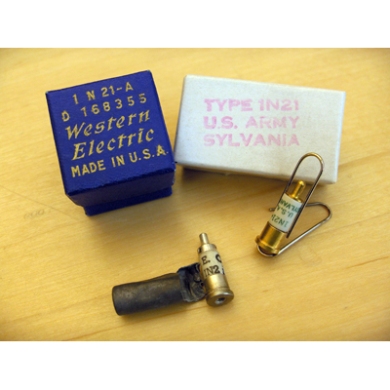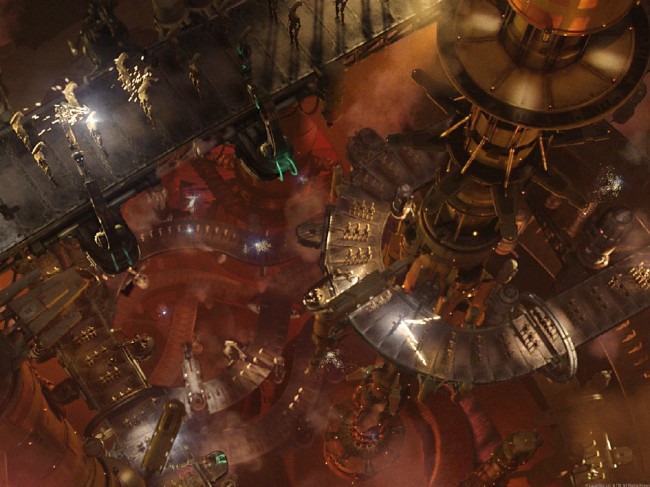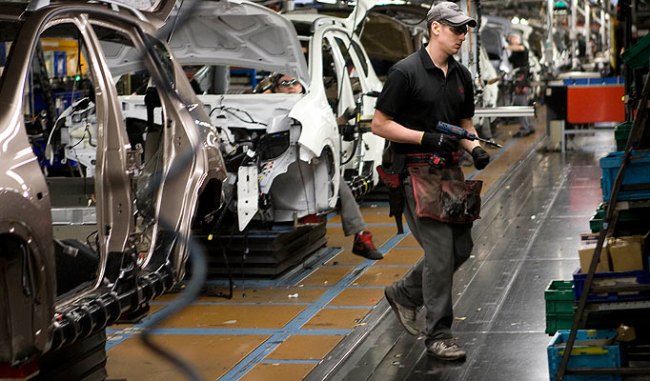We had a talk from Hugh this last week on the aesthetics of technology, and how a surprising amount of it is based on the ‘black box’. We watched a clip from the start of 2001: A Space Odyssey is representative of ‘technology’, the apes discover this, and subsequently learn how to use tools. This metaphor is repeated in technological products through the years, from the Sinclair watch to LaCie’s hard drive, designed by Neil Poulton.
This perspective on technological aesthetics can also be applied, if perhaps somewhat loosely, to ‘white goods’ and even to an extent radios and telephones of the early 20th century which are sometimes referred to as ‘brown goods’. They are all essentially boxes that hold a technology that is hidden from the user.
Even moving forward from the early 20th century, there is definitely an aesthetic of a ‘box’ in a lot of technological goods. That ranges from an elegant, functional design like Dieter Rams’ Braun RT20 to questionable 80s designs like the Pioneer SK71.
This was an interesting way of analysing product aesthetics, as it ignores any difference in the quality of the design and looks straight at the basic forms involved. Looking at products on such a fundamental level is quite interesting, and it can, in turn, be a basis for the design of products.
We have no reached a point where plastics, and plastic composites, are often superior to other materials. There is still room for development, as there is with everything, but plastics have reached a stage where they are widely used, and often the go-to material. We now have a situation where the main concern related to plastics, is the oil that is used to manufacture the vast majority of them. This leads on to looking into bio-plastics, that can be manufactured from sustainable sources, such as using plant-starch. Ironically, one plastic that is classed as a bioplastic is celluloid, one of the first plastics discovered.
Bioplastics are divided into starch-based, cellulose-based (celluloid) and a series of other smaller groups. We are currently at a stage where bioplastics can be considered first generation, meaning developments and advances are expected to be made in the future. What we can take from our present state of development is the fact that there is potential to replace at least some of our current non-biodegradable plastics in the future.
The other advantage of bioplastics, or at least some of them, is that they can biodegrade. This means that some plastics could be thrown on the compost heap, and within a few months become nutrients to help plants grow. This will reduce the carbon footprint of plastic manufacturing, and also make it easier for households wishing to get rid of packaging etc.
It is interesting that it seems we go from a situation, at the start of the 20th century, where plastics are being used to imitate other materials, to a stage where, in the present day, we are looking to ways of imitating plastics. Albeit, the replacements are still plastics themselves.
Will they prove a successful replacement for petroleum-based plastics? It’s probably too early to tell, but equally who would have predicted that traditional plastics would have advanced as far as they have themselves? It is certainly an area that has interested me throughout the design and technology course.
We had a talk from Nicholas Oddy on the future of design, and how the past can give us clues about what the future might hold. Looking at concept designs from the 50s, eg Raymond Loewy’s Ford Atmos car, it is clear that some aspects of this design were taken forward further down the line, especially aesthetically.
This is also evident in sci-fi films from the past, where certain aspects of the ‘future’ can be seen in current architecture and design, one example being the architecture in Things to Come (1936).
So as an extrapolation from the this evidence, it is feasible that concept cars and sci-fi films from the present may show to a degree what the future will hold. In terms of aesthetics and some technologies, future products may well have some influences from today.
The concept vehicles and products of the past were used to test aesthetics and radical changes to gauge consumer reactions, a similar idea is used today with future concepts. So essentially, although we don’t know what the products of the future will look like, it isn’t ridiculous to assume that they will be inspired by concepts being thought of currently.
Following on from Kirsty’s talk, we then visited the MAKlab workshop at the Lighthouse. It is a workshop that is open to the public to use, allowing freelance designers, students, or even hobbyists to utilise their facilities. The workshop itself was very impressive, with laser cutters and 3D printers alongside more traditional lathes and bandsaws etc. Below is an example of a Jura label template that was cut using the laser cutters and the electronics bench that allows people to create their own circuitry.
The 3D printer was a particular point of interest, it was an open source printer, which led us on to a talk upstairs in the Lighthouse. The talk was about the advantages of open source products, which allow people to create the products for themselves, and make improvements on them. This way of designing products allows a product to grow, through external inputs, without the boundaries of patents and IP. This led on nicely to talking about how 3D printers themselves can create open source products, such as at shapeways.com. People can design a model to be 3D printed, which is then kept on the database so that other people can purchase the product. It is a great way of essentially creating a community-based product design company.
We had a talk from Kirsty Ross on the materiality and form of design, and how one can influence the other.
One specific case study was Nokia, where Kirsty worked. The reinvention of their products recently was largely due to their product range becoming stagnated and bland. They wanted to become more ‘youthful’ by introducing a more bold, confident aesthetic.
To introduce this new aesthetic, a lot of time was spent looking into the form, colour and materials that would be used. To represent these ideas, the Nokia process was split into three different areas; now, next and then.
The ‘now’ is the Nokia Lumia, which they have looked to create a bold, interesting product that is well engineered and refined. They have utilised the CMYK colour scheme as those available, which have the connotations of being bright, confident and bold. The use of gorilla glass means the screen doesn’t scratch, which fits in well with the durable perception of Nokia’s products.
The ‘next’ looked at how the future of the Nokia product line will be changed. By working with craftspeople, they are looking to bring interesting textures and materials to their products. This will allow new forms and totally change the aesthetic of the phone.
The ‘then’ looks at the digital world, and how it will advance. Experimenting with behavioural transitions, materiality and character will give insights into how people react to certain changes, and the prospective paths to follow.
This way of looking at products was extremely interesting in terms of looking beyond what currently exists, and exploring what people will want and need in the future.
As an additional task, Kirsty asked us all to bring in a product that we felt had strong links between materiality and form. There was a large array of products and it was really interesting to see everyone’s interpretation of the task. I brought in a wooden spoon purely because the design of it hasn’t changed for thousands of years, it is a functional product which is entirely down to the materials used to make it, the wood allows hot liquids to be stirred with no conduction, and almost every household owns one.
We visited the digital design studio, looking at the 3D modelling/scanning department. It was really interesting, and the capabilities of the technology were really impressive.
They used laser scanning equipment to create a 3D map using a coordinate system. From this they could add layers and create very detailed models of a range of objects. To give some sort of idea of the scale, they have mapped Stirling Castle and Mount Roosevelt (above) and on the other end they have mapped a detailed human head (below). The level of detail was staggering, the inside of the nostrils on Mount Roosevelt were mapped by absailing down the faces and tying the laser scanner in place. Likewise, they modelled right down to veins and blood vessels in the head during a two year project.
This level of detailed mapping is beneficial both for restoration projects (if something is damaged on Stirling Castle they have an accurate image of what to restore) and for educational purposes (it allows dental students to see the areas of the mouth that have nerves and should be avoided). Additionally, the 3D map of Glasgow that has been created allows for architectural models to be placed in context to allow any adjustments to be made to fit in with surroundings.
The scope of the technology is vast, and it was really exciting to see and hear about the potential uses in the future.
When looking into the history of plastics and how they changed design, I came across the story of Wallace Hume Carothers, a chemist and head researcher for Du Pont, who developed neoprene and nylon, the first real plastics in their own right.
Du Pont have been major players in plastics throughout the last century, but the man that started the ball rolling, or at least had a big influence on said ball, is Wallace Hume Carothers. He was the man who led the team that discovered nylon, the first fully man-made plastic, and also played a major role in the discovery of neoprene.
The thing that stood out to me about his story, however, is that he committed suicide prior to the release of nylon. He felt he had ‘failed’. Although there is more to the story than purely his involvement in plastics and Du Pont, the fact that he felt he hadn’t accomplished much was very surprising. The groundwork he laid lead onto the full development on neoprene, but set Du Pont up to discover polymer based materials such as Teflon and Kevlar amongst others.
Anyway, I felt his story deserved a bit of recognition in any study of the development of plastics.
In the decades following the war, there was a move towards disposable products and packaging. Plastics were heavily involved, and facilitated this move due to being cheap to mass produce. The factories that had, during the war, been utilised for making munitions were put to use mass producing consumer goods. With a new consumerist mentality, companies looked to designers more and more often to raise their products above those of their competitors. Exhibition such as the Council of Industrial Design’s ‘Britain Can Make It’ (1946) and the ‘Festival of Britain’ (1951) really pushed British designing to the fore, and showed off the build quality and aesthetics that could now be achieved. Designers had the freedom to utilise materials, particularly plastics, that had previously been focused on the war effort, which allowed the form of products to be changed.
To me there were two main directions that design took, it partly moved towards a more elegant design ethos, where plastics were utilised effectively to progress products. One prominent designer during this period is Kenneth Grange. He moved British design forward, creating more elegantly designed products whilst utilising plastics. An example of this contrast is between Kenneth Wood’s original Kenwood mixer, and Kenneth Grange’s subsequent design (c. 1960)
Unfortunately, there was also a move towards producing products cheaply, that were aimed at disposal rather than repair when, or if, they broke. Disposable razors became widely available as they could be produced cheaply using polystyrene. Similarly, polyethylene grocery bags replaced their paper equivalent. This, on the whole, led to a culture where some products were poorly designed and bought purely out of convenience rather than their quality.
In my opinion, despite the fact that plastics led to this acceptance of disposable, cheap products, it has done far more in terms of moving Britain forward and helping to modernise industrial design. There is enough acceptance that these products are cheap for a reason, and an appreciation that good design will cost more, to allow room for both ends of the product range.
The war played a massive part in the advancement and use of plastics. The metal shortages meant that plastic became a necessity both during and after the war. The use of Perspex in aircraft canopies also became far more prominent during this period, and this could be seen in the shape, there was no longer the need for flat panels of glass.
Prior to the war there was the development of several plastics that are still common today, polystyrene, nylon and polyethylene were all developed in the late 30s, and were all used widely during the war. Nylon for example, was used for stockings for a period during the war, but DuPont moved their efforts towards producing parachutes, aeroplane and glider tow lines and ropes as America joined the war. This led to a shortage in stockings, causing riots in some areas. Similarly, polystyrene was used frequently in radios, radar housings and other military equipment during the war. Polyethylene was used to coat wires by the military, although it was still an expensive plastic during this time. These three cases show that the reliance on plastics was growing, and was exacerbated during the war as production focussed on providing military equipment.
Silicon was also developed during the war, and was the favoured material for semi-conductors in radar receivers. Again, this led to the development of silicon in a military capacity before being used widely in semi-conductors after the war’s end. This increase in use of plastics meant that it was now becoming a material that was accepted and was no longer used to imitate other materials.
This development paved the way for the post-war consumerism that led to disposable products and plastic becoming increasingly widely used as the material of choice. From a design perspective, the advance in plastic opened up the freedom the alter form, and create more elegant products, moving away from the rugged ‘Americana’ styling of the late 40s and 50s. This, for me, was great for design and saw the emergence of designers such as Kenneth Grange.
In February we had an industrial visit to Nissan in Sunderland, which was really impressive. The level of automation in the factory was incredible, but equally impressive was the level of precision in the skilled labour of the 6% of the factory that wasn’t automated. They worked to time limit of 59 seconds per car, some roles had several jobs to do in that time which made it amazing to watch.
The factory was massive, during a 4 hour tour we apparently only saw around 10% of it. The number of machines in some areas made it feel like a sci-fi film; sparks flying everywhere as they went about their business reminded me of the droid factory in Star Wars (below). The way that the cars flowed through the system was really impressive, with such tight margins for error.
Some of the machines were especially awe-inspiring; the 3000 tonne press that forged the doors into shape was incredible to watch. The painting process was also really interesting, with each car going through a series of baths which added a new coat of paint to the car. The cars were then checked for imperfections, the level of quality-control was another very impressive part of the process.
After painting, the cars were then fitted with all their components. This area was a more manual-orientated part, which in itself was impressive. This area then led on to the test facility for further quality control, 1 in 5 cars are tested on the test-track for performance levels. Once they have passed the test, the cars are then moved out to be shipped all over the world.
